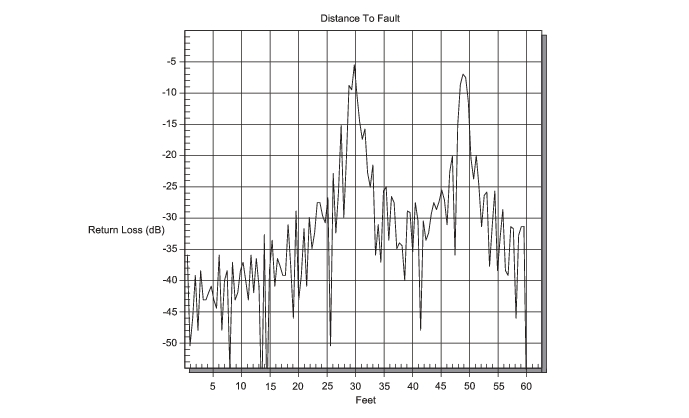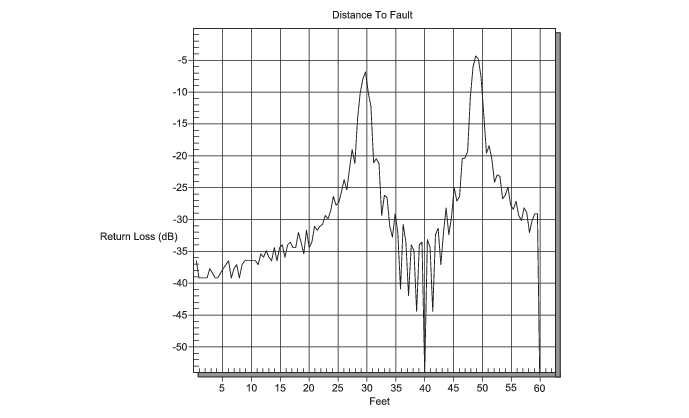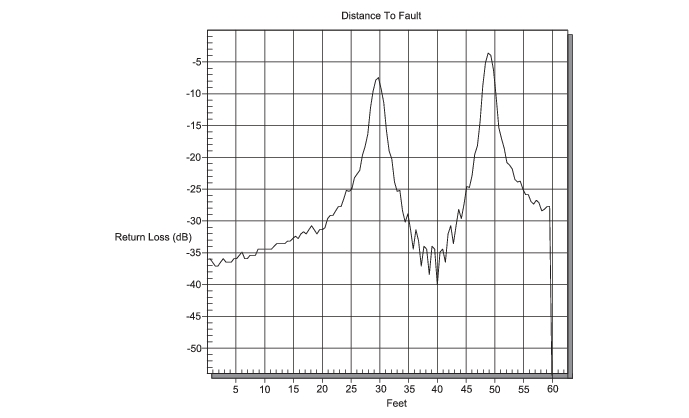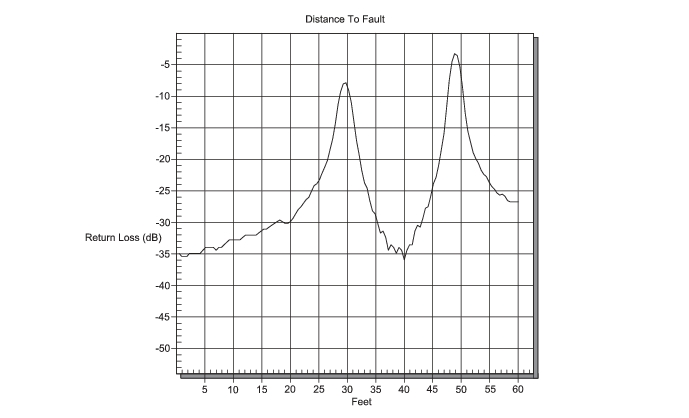The theoretical requirement for inverse FFT is for the data to extend from zero frequency to infinity. Side lobes appear around a discontinuity due to the fact that the spectrum is cut off at a finite frequency. Windowing reduces the side lobes by smoothing out the sharp transitions at the beginning and at the end of the frequency sweep. As the side lobes are reduced the main lobe widens thereby reducing the resolution.
In situations where a small discontinuity may be close to a large one, side lobe reduction windowing should be used. When distance resolution is critical, windowing can be reduced.
The types of windowing in order of increasing side lobe reduction are: rectangular, nominal side lobe, low side lobe, and minimum side lobe. Figure: “Rectangular Windowing” through Figure: “Minimum Side Lobe Windowing” show examples of the types of windowing.




